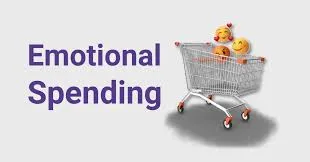Sometimes we do not buy things because we need them. We buy them because we are feeling something. Maybe we are bored. Maybe we are upset. Maybe we are just trying to feel better after a rough day. This is what emotional spending looks like, and it happens more often than you might think.
We usually hear about emotional spending from a place of guilt. People say, “I should not have spent that money,” or, “Why do I keep doing this?” But instead of focusing on shame or regret, what if we looked at emotional spending through the lens of routine? What if the way we spend money was a pattern that made sense once we really stopped to examine it?
It is not about being bad with money. It is often about trying to feel okay when things inside us are not okay. And while that might not be the healthiest method, it is human. So instead of beating ourselves up, let us take a clearer look and figure out how to work with those emotions.
One reason to get ahead of emotional spending is the financial aftermath. It can lead to mounting credit card bills and stress that just adds fuel to the emotional fire. Many people find themselves trying to pay off credit card debt loans without really knowing how they got there. But the truth is, the journey started with emotions, not just expenses.
Getting Curious Instead of Judgmental
Most people skip right over the “why” when they think about spending habits. But curiosity is a powerful tool. Instead of saying, “I blew a hundred dollars on stuff I do not need,” ask yourself, “What was going on with me before I made that purchase?”
Were you feeling overwhelmed? Did you have a stressful conversation? Were you trying to reward yourself after a long day?
There is always something behind the spending. Emotional purchases are rarely random. They often come right after a trigger. If you can start connecting those dots, you are one step closer to managing the behavior.
Build Your Emotional Vocabulary
This might sound odd in a conversation about money, but understanding your feelings is just as important as understanding your budget. People who struggle with emotional spending often have a hard time naming what they are feeling. They just know they are uncomfortable and want that feeling to go away.
Take some time to learn more words for emotions. Not just sad or happy, but feelings like frustrated, disappointed, ignored, powerless, hopeful, or lonely. The better you get at naming what is going on inside, the easier it becomes to pause and make a different choice.
You can even keep a small journal and write down what you were feeling before and after a purchase. Over time, you might see patterns that surprise you.
Redesigning Your Rewards
Let us face it. Spending money can feel good. It gives a quick burst of joy or distraction. But what if you found other ways to give yourself those same good feelings?
Instead of buying a new outfit every time you feel down, try something else that lights you up. Maybe it is a long walk with music. Maybe it is baking something you love. Maybe it is texting a friend or doing something creative with your hands. The point is not to replace one habit with another just to stay busy. The point is to figure out what makes you feel cared for without having to pull out your wallet.
This is where experimenting can be fun. Make a list of things that make you feel relaxed, energized, or connected. Keep it nearby for those tough moments when your first impulse is to shop.
Set Boundaries That Feel Supportive
Some financial advice can feel too strict or cold. But boundaries do not have to be harsh. Think of them as supports, like guardrails that help you stay on track when your emotions are running high.
This might look like setting a weekly spending limit for extras or using a waiting period before any purchase over a certain amount. It could even be something simple, like keeping your card out of reach when you know you are having a tough day.
One helpful tip is to use cash for things that tend to trigger emotional spending. When you see the money leave your hand, it is easier to stay mindful.
Focus on Progress, Not Perfection
There will be days when you make a purchase that you later regret. That is okay. Progress is not about never making a mistake. It is about learning from it and doing slightly better next time.
Addressing emotional spending takes time. It is not just about fixing your budget. It is about becoming more aware of your emotional world and finding healthier ways to care for yourself. That kind of growth is not instant, but it is worth it.
Final Thoughts
Emotional spending is not just a money issue. It is an emotional one. And the solution is not to shame yourself into better behavior. It is to treat yourself with more understanding and care.
So the next time you feel the urge to shop your way out of a bad mood, take a pause. Get curious. Ask what you are really needing in that moment. You might find that the answer has nothing to do with what is in your cart, but everything to do with what is in your heart.
also read: Exploring Longline Bras: Elegance and Functionality







